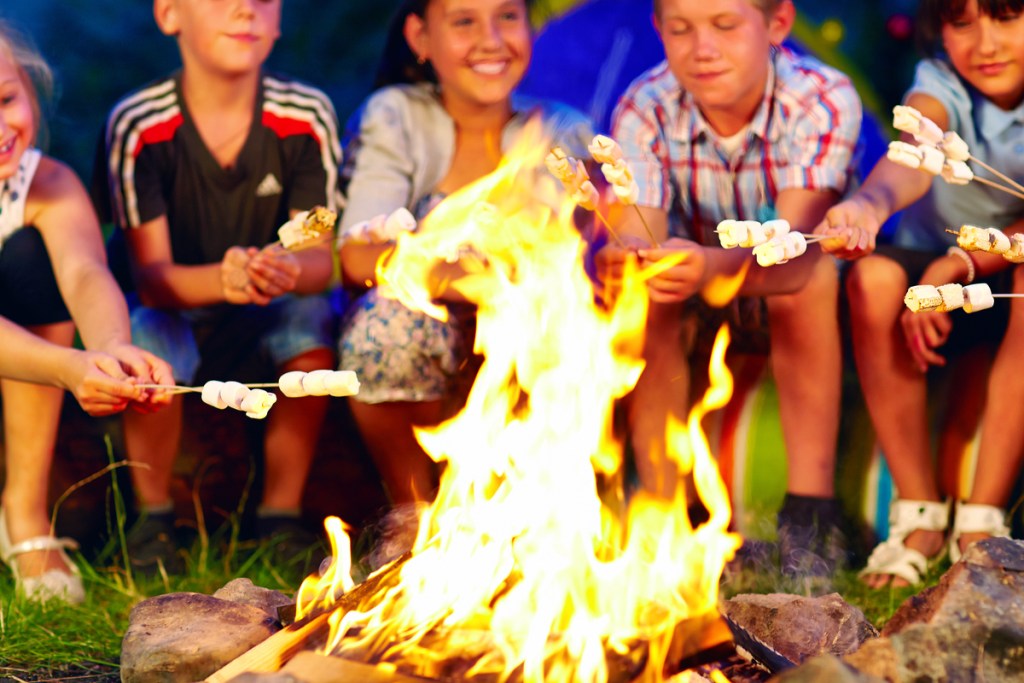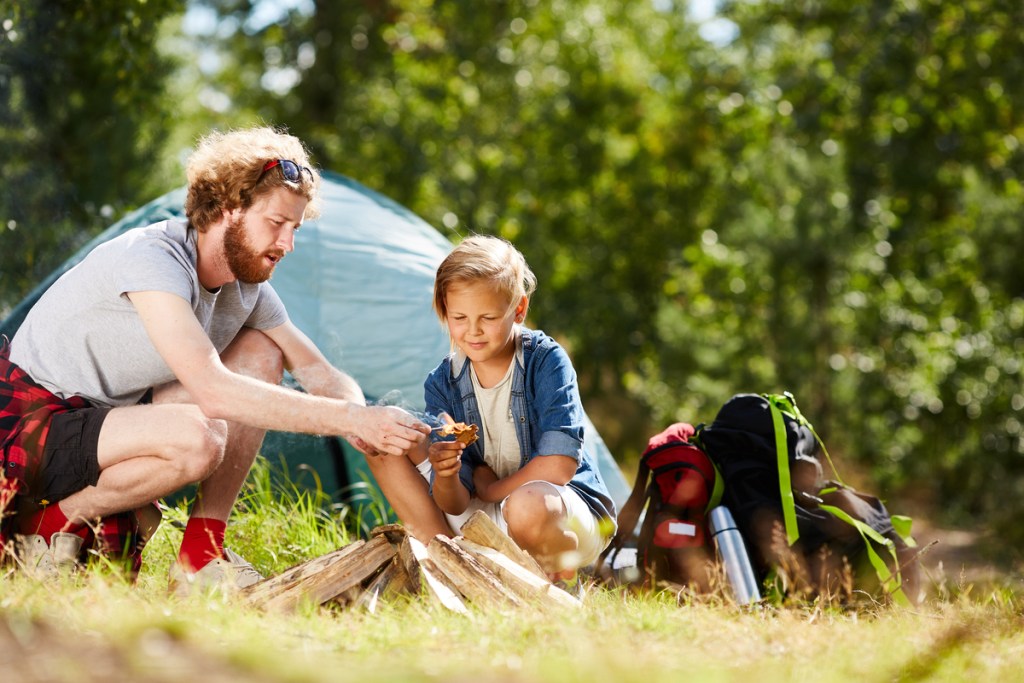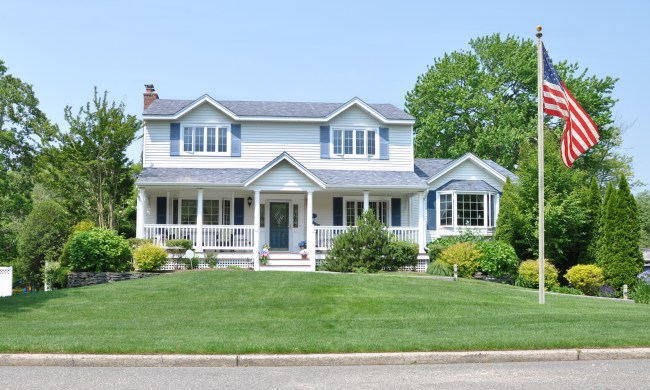
Whether you’re heading to the wilderness or your own backyard, family time around a campfire builds lasting memories. Children love it, with some preferring to sit and stare while others become storytellers. Either way, building the fire can be one of the most fun parts of the evening, and, if your family is willing to follow a few simple guidelines, the kids can take part in it too.
Acquire a permit if needed
Check with the local Fire Marshal’s office or ranger station for an active burning ban. If the weather has been especially dry and windy, it may not be the best day for a bonfire.
Set up a safe burning area
An enclosed fire pit or fire bowl is certainly the safest choice. If you don’t have one, use large rocks to define a fire ring where no one, other than the adult responsible for tending to the flames, can enter. Clear the area around the fire pit of flammables and trip hazards, and ensure the pit is at least 20 feet from buildings, trees, shrubs, or other flammable objects. Be sure to avoid overhanging branches as well.
Neatly stack your firewood at least 15 feet from the fire pit to prevent constant trips to and from the garage. Last, place a shovel or rake and a five-gallon bucket of water nearby the pit to extinguish the fire at the end of the evening.
Burn only seasoned firewood
For a bright bonfire with limited smoke and sparks, be sure to burn well-dried hardwood with minimal bark. To add to the ambiance, feel free to add a few pieces of dried pine or spruce for some cheerful pops and crackles.
Though it might seem fun to burn, the bonfire is no place for glass, metal, plastic, or trash. Clear the space of any foreign objects that spark kids’ curiosity, and explain that they cannot put anything in or near the fire without adult supervision. Last, never use fire accelerants such as chemical solvents, gasoline, kerosene, or diesel fuel in the fire, and keep fireworks well away from bonfires. These additives can make for large, difficult to control flames.
Be careful with sharp sticks
Roasting hotdogs and making s’mores is one of the most fun things to do, but those sharp roasting sticks can be dangerous in the dark. Walking about in the dark with sharp objects is never a good idea, so make sure all your guests, not just the kids, leave the sticks at their seats when they get up.
Never turn your back on the fire
Once started, never leave the fire unattended. When the party’s over, use a shovel or rake and a bucket of water to ensure that the fire is out cold. If it’s too hot to touch, it’s too hot to leave.

Rules for kids
Kids of all ages enjoy a good campfire and many are naturally fascinated with and curious about fire. Rather than attempting to scare them into safe behavior or forbidding access, set the stage by modeling good fire safety and involving them in the process. Give them jobs like gathering kindling, filling a bucket with water, or setting up the s’mores station. During this time, clearly, firmly, and patiently explain the rules.
- Stay three feet from the fire unless it’s your turn to toast a marshmallow. Mark the three-foot circle around the fire with large rocks, so they can see the boundary.
- If you’re anywhere near the fire, don’t engage in running, throwing, or horseplay. Pro tip: Create a “hot zone” around the fire, about 20 feet from the pit, to delineate the no-playing area.
- Do not leave toys, trash, or any other trip hazards inside the hot zone.
- Never touch the fire ring, it could burn you.
- What goes in the fire stays in the fire.
- Ask permission before poking or placing things in the fire. Never throw anything into the fire.
Kids can help
Most children younger than age five are not yet mature or coordinated enough to help with the active fire. However, with kids ages five to about seven, you can teach them how to clear the area, choose fire-building materials, and strike a match safely. Most kids ages eight and up are old enough to add firewood to active fire and completely extinguish it at the end of the night. Regardless of experience, children should never build or tend to fire without close supervision.
Learning to safely build, enjoy, and extinguish a fire is a rite of passage, right up there with learning to swim or ride a bike. It’s a physical and mental challenge that builds confidence and becomes a building block for life. So enjoy your family campfire safely, and create accident-free bonfire memories.



